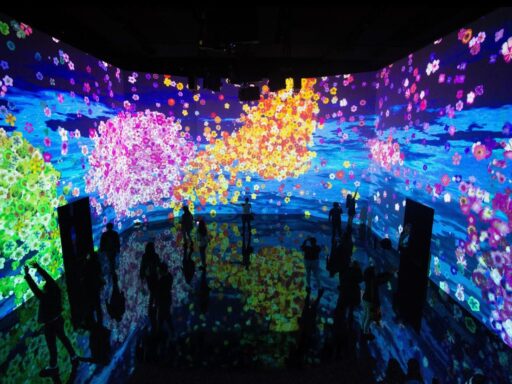Introduction:
In the dynamic realm of web design, the mastery of color theory stands as a linchpin for creating digital experiences that captivate and resonate with users. Far beyond mere aesthetic considerations, understanding the nuances of color enables designers to convey emotions, establish brand identities, and enhance the overall user experience. This comprehensive guide delves into the intricacies of color theory, offering a practical and insightful approach for designers at every skill level.
Exploring the Fundamentals:
To embark on this journey, we first delve into the fundamental concepts encapsulated in the color wheel. From primary hues to intricate harmonies, we unravel the building blocks that form the basis of all color interactions. The psychological and cultural dimensions of colors are explored, laying the groundwork for informed design decisions.
As we embark on this journey, we’ll explore the psychology behind colors, navigate the intricacies of the color wheel, and dive into practical techniques that will elevate your designs. Whether you’re a seasoned designer looking to refine your skills or a beginner eager to grasp the essentials, this guide promises a hands-on approach to mastering the art and science of color in web design.
Description:
Dive deep into the world of color harmony, contrast, and effective palette creation. Through real-world examples and hands-on exercises, you’ll gain actionable insights to immediately enhance your projects. This guide isn’t just about theory – it’s a practical companion encouraging experimentation and immediate application of knowledge.
Throughout the exploration, we’ll dissect successful web designs, showcasing how top designers strategically use color to captivate audiences, convey messages, and create memorable online experiences. You’ll learn to wield color with intention, making informed choices that align with brand identity and user expectations.
1. The Color Wheel Unveiled:
Understanding the color wheel is akin to navigating the designer’s palette. We dissect primary, secondary, and tertiary colors, unraveling the symphony of shades that form the backbone of every design. Color harmonies, from complementary contrasts to analogous blends, are elucidated, providing designers with a repertoire of choices to evoke specific moods and aesthetics.
2. Color in Branding and Communication:
Colors transcend mere visual appeal; they are potent tools in branding and communication. This segment delves into the strategic use of color to establish brand identities, exploring the psychological nuances that make certain colors synonymous with specific emotions. Through case studies, we unravel the success stories of brands that have harnessed the power of color to leave indelible marks on their audiences.
3. Color in Web Design:
With the fundamentals in place, we transition to the practical application of color theory in web design. Choosing an effective color palette is demystified, with insights into tailoring choices based on the website’s purpose and target demographic. The interplay of color in UI elements, navigation, and calls-to-action is scrutinized, offering a blueprint for designs that not only look appealing but also guide users seamlessly through digital landscapes.
4. Accessibility and Inclusivity:
A responsible and inclusive design approach considers the accessibility of color choices. We explore the imperative of creating designs that cater to users with visual impairments, emphasizing the role of color contrast and compliance with ADA standards. Tools and techniques for evaluating and ensuring accessibility are unraveled, fostering designs that are welcoming to diverse audiences.
5. Practical Application with Tools:
Equipped with theoretical knowledge, designers need practical tools to implement their creative visions. This section introduces popular color-picking tools, guiding designers through the process of creating and testing color schemes. The adaptation of color in responsive design is demystified, ensuring a seamless visual experience across a myriad of devices.
Conclusion:
In conclusion, the mastery of color theory in web design transcends the boundaries of mere pixels and hues. It is a strategic dance between art and science, where informed choices elevate designs from visually pleasing to emotionally resonant. By grasping the intricacies of the color wheel, leveraging psychological insights, and championing accessibility, designers unlock the potential to craft digital experiences that leave a lasting impact. This guide serves as a beacon, empowering designers to wield color with purpose, nuance, and a profound understanding of its transformative potential in the ever-evolving landscape of web design.
“Mastering Color Theory in Web Design: A Practical Approach” is more than a guide; it’s your toolkit for transforming digital experiences. As you conclude this colorful journey, remember that the art of web design is an ever-evolving canvas. Armed with newfound knowledge, embrace the confidence to experiment, innovate, and breathe life into your designs.





